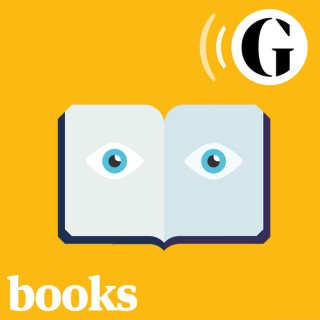Podcasts about dunthorne
- 4PODCASTS
- 7EPISODES
- 30mAVG DURATION
- ?INFREQUENT EPISODES
- Apr 30, 2019LATEST
POPULARITY
Latest podcast episodes about dunthorne
Joe Dunthorne and Sarah Crossan on poetry and fiction – books podcast
On this week’s show, Crossan talks about using poetry in her novel-in-verse Toffee and Dunthorne shares why he writes poetry to escape novels. Help support our independent journalism at theguardian.com/bookspod
Book Slam Podcast 38 (featuring El Crisis, Hari Kunzru and Joe Dunthorne)
Book Slam's 38th podcast features handsome, talented and successful authors Hari Kunzru (pictured) and Joe Dunthorne discuss their spanking new novels, 'Gods Without Men' and 'Wild Abandon' respectively. There's also live music from the unique and thoroughly brilliant El Crisis. Patrick gushes and Elliott is mildly embarrassed by the whole thing.
Book Slam Podcast 34 (with Ben Okri, Simon Armitage, Nikesh Shukla, Tanya Auclair, Joe Dunthorne and Philip Wells)
The 34th Book Slam podcast is a bumper edition, with Man Booker Prize-winner Ben Okri discussing 'A Time For New Dreams', Simon Armitage picking up hitchers, and Philip Wells catching alight. There's also our old friend Joe Dunthorne reading from 'Submarine', music from Tanya Auclair and debut novelist Nikesh Shukla discussing 'Coconut Unlimited' and facing up to the robo-charm of Angebot. Patrick is lugubrious, Elliott reaches for the dictionary.
This month, we thought we'd give you a little bonus for being so good. This is Joe Dunthorne, author of the acclaimed 'Submarine', reading a 'choose your own adventure' story at Book Slam. It's very rude. For that, of course, you must blame the audience.
Book Slam Podcast 29 (with Hanif Kureishi, Will Self, Joe Dunthorne, Tariq Ali and much more)
The 29th Book Slam podcast is a veritable jamboree, featuring some of contemporary literature's biggest names; including Will Self reading from his latest book, 'Walking To Hollywood', Hanif Kureishi discussing a new collection of short stories, poetry from Joe Dunthorne, music from Milly Blue and Jesca Hoop, and Tariq Ali facing up to the challenges of the Book Slam Big 5. Elliott's glass is half full, Patrick's half empty.
Joe Dunthorne on his debut novel Submarine
Joe Dunthorne is a graduate of the Creative Writing Masters program at UEA, where he was awarded the Curtis Brown Prize. His poetry has been published in Reactions 5, Magma, Smiths Knoll, and Tears in the Fence. His work has been featured on Channel 4, BBC Radio 3, 4 and in The Guardian and Vice magazine. We met at the IFOA in Toronto to discuss his debut novel, Submarine, why the behavior of teenage boys is often seen as abominable, the importance of getting laid, ambiguous characters, depression, the brilliance of novelist W.G. Sebald, East Anglia University, how humour works, and dust jackets which both attract attention and complement content.
John CONSTABLE, A ploughing scene in Suffolk (A summerland) c.1824
This painting is the second version of A ploughing scene in Suffolk (A summerland). The owner of the first version of 1814 , John Allnutt, a Clapham wine merchant and collector, became unhappy with the sky in his painting and asked another artist, John Linnell, to overpaint it. Some years later, around 1825, Allnutt admitted: ‘I was foolish enough’ to have Constable’s original sky ‘obliterated’ and that, ‘though extremely beautiful’, the new sky ‘did not quite harmonize with the other parts of the picture’ (Beckett I, p. 83). He asked Constable to restore the original sky and, ‘if he could do it without injury to the picture’ reduce the height of the painting to match another work in his collection (Augustus Callcott, Open landscape: Sheep grazing c.1812, York City Art Gallery). Graciously, Constable took back Allnutt’s pictureand painted a second and slightly smaller version for him – this painting. He did this free of charge because he was grateful to Allnutt for ‘buying the first picture he ever sold to a stranger’ (Beckett I, p. 83). Constable, or his assistant Dunthorne, made extensive underdrawing on this canvas, working directly from the 1814 original, following the first version closely. He gave this painting a cooler tonality, and added the rain falling in the distance. Ian St John has suggested that the bird hovering in the sky is ‘a bird of prey such as a kestrel or sparrowhawk, birds still common in the vale’ (St John 2005, p. 31). The work was finished before January 1825 when Allnutt visited Constable’s studio to view the new version. Allnutt visitedagain the following year, when he brought a present of three sorts of a particularly beautiful ultramarine, which was a generous gift, as the pigment was a rare luxury. In October 1826 Constable visited Allnutt at Clapham and spent an enjoyable day with the Allnutt family, viewing their picture collection and taking a walk on Clapham Common. He wrote in his journal on his return that ‘Nothing could be more polite & kind’, and observed that ‘the truth is I could find that he has been much imposed on by artists in general – & that he was pleased with my conduct’ (Beckett I, p. 85). After Constable’s death Allnutt continued to purchase his works, including pictures from the Constable sale in 1838: Salisbury Cathedral from the Bishop’s Grounds 1820(National Gallery of Canada, Ottawa) and Helmington Dell 1830 (Nelson-Atkins Museum of Art Kansas City, Missouri)(Beckett I, p. 85).







